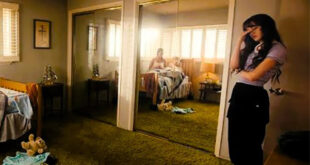If a photograph is a recording of a moment in time, a memory, than can a collection of photographs be said to be a collection of memories, or are they something more? Viggo Mortensen’s newest book of photographs, Ramas Para Un Nido (literally translated as Branches for a Nest), published by Perceval Press, is a collection of pictures taken by the author at various times and locations over the past couple of decades.
However, the photos aren’t arranged in any chronological, or geographical, order. In his introductory note to the collection of images he refers to it as a “distillation of isolated instances”. Perhaps more telling are the quotes he’s bookended his photos with, from the late Danish writer Klaus Rifbjerg before and the late American playwright Sam Shepard after.
And the moment you start a journey, you are on your way home. I travel to come home. I’m always on my way home. (translated from Danish) Rifbjerg.
I feel like I’ve never had a home, you know? I feel related to the country, and yet I don’t know exactly where I fit in. There’s always this kind of nostalgia for a place, a place where you can reckon with yourself. Shepard
I’ve deliberately crammed the two together for both the themes they express and how they relate to the images in the book. There’s also the simple reason that, aside from the two paragraph forward mentioned above, and the dates and titles of the images, they represent the book’s only text. Either Mortensen assumes we are aware enough to form our own opinions and don’t have any need of words to do so, or he prefers to let the images stand alone and speak for themselves.
For when you look at any collection of images, be it photographs or paintings, you end up at them both singularly and collectively. It doesn’t matter how the curator has displayed them in a gallery or an editor arranged them in a book, there will be those images which will stand out and form the strongest impression. In fact they may well be what causes you to decide there is a particular theme or thought behind what you have just seen.
By presenting his images in what at first appears to be a jumble, with sometimes decades or thousands of miles separating juxtaposed images, Mortensen has ensured we will see each photograph as a separate entity. On a couple of occasions he has placed pictures of similar subject matter side by each, the images of road kill for example, but upon examination of titles we see these were taken years apart and in different locations.
You think he might be breaking the pattern when you’ve find he’s also clumped together a few shots from a trip to Nablus in the West Bank, but then you discover another from the same location somewhere else. However, from the variety of locations picture in the book, North Africa, North America, Europe, Asia and the Middle East, you do form the impression the photographer is a bit of a vagabond.

You could even go so far as to say the photos represent his search for that very mythical ‘home’ referenced in both the opening and closing quotes of the book. However, on close examination you’ll see many of these photos are of people’s home. From the fields their food is grown in, to the streets they walk down, to the shop windows they pass on their way to wherever they go each day. Everything we experience in our day to day life, the trees in a park, the graffiti on a wall, or an abandoned building are all part of our definition of home.
Home can be an abstract, some sort of philosophical underpinning which creates the values we hold dear, but it is also the prosaic and the mundane. Mortensen’s photos show us those details of life we take for granted, those details which without our knowing it have shaped our definition of where we live, what we call home.
Instead of taking the typical tourist pictures of places like Palermo or Istanbul he shows us what the people see every day. There’s nothing exotic or fancy about them, they are places just like anywhere else, just like our place. In Shepard’s quote he talks about the nostalgia for a place called home. But nostalgia isn’t reality, it’s seeing the past through the lens of thinking it was better then things are today.
Mortensen’s photos, individually and collectively, show us home for what it is. It’s no great flag waving statement, it just is. A place we come from, where we shop, where we eat and where we go for walks in the street or the park. There’s nothing glamorous about any of the photos in this book, but when you come down to it there’s nothing really glamorous about home – its familiar and comfortable.
Ramas Para Un Nido is a collection of beautiful and simple photographs which will have you rethinking your notion of home and appreciating the simple beauty of the prosaic. Mortensen’s eye for detail is astonishing, and it’s this eye which manages to capture the little things in life which make up home.
 Blogcritics The critical lens on today's culture & entertainment
Blogcritics The critical lens on today's culture & entertainment




